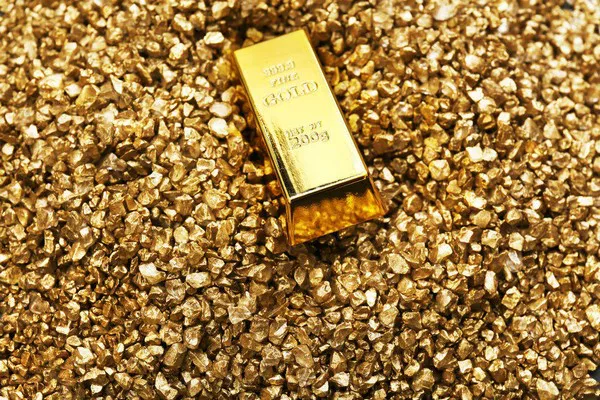The global financial landscape is in a constant state of flux, subject to a myriad of economic, political, and societal influences. One of the most intriguing developments in recent times has been the sudden and substantial increase in the price of gold. Often regarded as a safe haven asset, gold has historically played a vital role in times of economic uncertainty. This article delves into the multifaceted factors contributing to the unprecedented surge in gold prices and seeks to provide a comprehensive understanding of this phenomenon.
Global Economic Uncertainty
At the heart of the recent surge in gold prices lies a backdrop of global economic uncertainty. Various factors, including the ongoing trade tensions between major economies, geopolitical conflicts, and the persistent uncertainties associated with the COVID-19 pandemic, have created an environment where investors are seeking refuge in traditional safe haven assets. Gold, with its historical reputation for preserving value in times of market turbulence, has attracted investors looking to hedge against potential economic downturns.
Inflationary Pressures
Another key driver of the surge in gold prices is the prevailing inflationary pressures witnessed across the globe. As central banks around the world respond to the economic disruptions caused by the pandemic, they have resorted to unprecedented levels of monetary stimulus, including low interest rates and large-scale asset purchases. While these measures aim to stimulate economic recovery, they also raise concerns about the potential for higher inflation. In such an environment, gold, with its intrinsic value and limited supply, becomes an attractive asset for investors seeking to protect their wealth from eroding purchasing power.
Currency Depreciation and Weakness
The depreciation of major currencies, coupled with a sense of uncertainty surrounding their stability, has also contributed to the surge in gold prices. When the value of fiat currencies diminishes, investors often turn to gold as a store of value that is not subject to the same fluctuations. This phenomenon is particularly pronounced in cases where central banks engage in aggressive monetary easing, leading to a depreciation of their respective currencies. Gold’s historical role as a currency hedge and a long-term store of value makes it an appealing asset in times of currency weakness.
Supply Chain Disruptions
The sudden increase in gold prices is also influenced by supply chain disruptions within the gold mining industry. The pandemic’s impact on mining operations, including closures, reduced workforce, and transportation challenges, has led to a decrease in the global supply of newly mined gold. Simultaneously, the demand for gold has remained strong, further exacerbating the supply-demand imbalance and pushing prices upward. Supply chain interruptions have highlighted the vulnerability of commodities like gold to external shocks, ultimately contributing to its price surge.
Central Bank Activities
Central banks play a significant role in influencing gold prices through their policies and actions. Over the past few years, there has been a notable shift in central bank behavior regarding gold reserves. Several central banks, particularly those of emerging economies, have been actively increasing their gold holdings as a means of diversifying their reserves away from traditional currencies. These actions not only signal a growing confidence in gold’s value but also create a supportive demand environment that contributes to price appreciation.
Investor Sentiment and Speculation
Investor sentiment and speculative activities have also contributed to the recent surge in gold prices. As news headlines highlight economic uncertainties, geopolitical tensions, and inflationary concerns, investors may react by flocking to safe haven assets like gold. This increased demand, driven by fear and speculation, can lead to rapid price increases as buyers compete for a limited supply of the precious metal. The role of investor sentiment in driving short-term price fluctuations cannot be understated.
Technological Advances and Industrial Demand
Gold’s value isn’t solely derived from its role as a financial asset; it also has a wide range of industrial applications, particularly in electronics and technology. As technological advances continue, the demand for gold in these sectors has grown. For instance, gold is an essential component in the manufacturing of electronic devices, including smartphones, computers, and medical equipment. The combination of growing industrial demand and limited supply due to mining disruptions can put upward pressure on gold prices.
Conclusion
In conclusion, the sudden and substantial increase in gold prices is a complex phenomenon driven by a confluence of factors. Global economic uncertainty, inflationary pressures, currency depreciation, supply chain disruptions, central bank activities, investor sentiment, and technological advances all play a significant role in shaping the trajectory of gold prices. As the world grapples with ongoing challenges, including the aftermath of the pandemic and shifting geopolitical dynamics, the appeal of gold as a safe haven asset and a store of value remains strong.
Investors and analysts alike will continue to closely monitor the evolving economic landscape to gain insights into the future direction of gold prices. As the interplay of these multifaceted factors continues to unfold, gold’s role as a barometer of economic health and a hedge against uncertainty will persist, solidifying its position as a timeless asset in the ever-changing world of finance.


